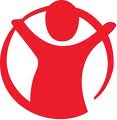 It’s good to be a kid in Norway, Australia, Iceland, Sweden, and Denmark. The worst country to be a kid on the planet is Afghanistan, which ranks lowest based on the Mothers’ Index Ratings in Save the Children’s State of the World’s Mothers 2010 report, the 11th annual version of this project.
It’s good to be a kid in Norway, Australia, Iceland, Sweden, and Denmark. The worst country to be a kid on the planet is Afghanistan, which ranks lowest based on the Mothers’ Index Ratings in Save the Children’s State of the World’s Mothers 2010 report, the 11th annual version of this project.
You might notice the United States hasn’t yet been mentioned. That’s because it’s not in the top 5 best places to be a woman or a kid; but the U.S. is also far, far from the worst nation in terms of childhood and maternal health metrics.
The U.S. ranks as #28 on the Rankings’ Tier I of the world’s most developed countries. For context, note that the countries just above the U.S. include Croatia, Latvia, Lithuania, Hungary, and that economically-downtrodden land called Greece.
The sobering statistics of why Afghanistan is the worst place on earth to be a kid are that a typical Afghani woman has only 4 years of formal education and will live to be only 44. More than 1 in 4 Afghani children dies before his or her fifth birthday; thus, every Mom in Afghanistan has probably lost a child.
Contrast that to #1 Norway, where virtually all women are attended by a health professional at the birth of their child and the typical Norwegian woman has over 18 years of formal education and will live to be nearly twice the age of her Afghani sister — 83 years.
Health Populi’s Hot Points: As the U.S. approaches the coming Mother’s Day weekend, it’s timely to assess how American Moms fare compared with mothers in the rest of the world. According to Save the Children’s Index, American moms do better than American kids: Moms place #23 among developed countries, and kids, much lower at #34 among the 43 most developed nations. Perhaps you might feel gratified that Serbian, Belarussian, Ukrainian, Russian, Romanian, Macedonian, Moldovan, Albanian, and Bosnian kids fare worse health-wise than Americans, but I’m not pleased with any rankings above a single digit for either moms OR kids, wherever they live.
Underneath the overall Index are traditional measures such as female life expectancy at birth, infant mortality rate per 1000 live births, and lifetime risk of maternal death; furthermore, the Index includes metrics for maternity leave benefits, expected years of schooling for women, ratio of female to male earned income, and participation of women in national government. These latter statistics speak to the quality of life for women as well as their ability to become their communities’ health care workers. In many parts of the world, women cannot or will not seek care from male health workers.
Save the Children knows it takes a village when it comes to battling maternal and child health challenges. This is true whether moms and kids live in the bottom tier of economic development or the top tier. In the U.S., there’s a crisis of health for children — and for too many mothers, as well.




 Interviewed live on BNN Bloomberg (Canada) on the market for GLP-1 drugs for weight loss and their impact on both the health care system and consumer goods and services -- notably, food, nutrition, retail health, gyms, and other sectors.
Interviewed live on BNN Bloomberg (Canada) on the market for GLP-1 drugs for weight loss and their impact on both the health care system and consumer goods and services -- notably, food, nutrition, retail health, gyms, and other sectors. Thank you, Feedspot, for
Thank you, Feedspot, for  As you may know, I have been splitting work- and living-time between the U.S. and the E.U., most recently living in and working from Brussels. In the month of September 2024, I'll be splitting time between London and other parts of the U.K., and Italy where I'll be working with clients on consumer health, self-care and home care focused on food-as-medicine, digital health, business and scenario planning for the future...
As you may know, I have been splitting work- and living-time between the U.S. and the E.U., most recently living in and working from Brussels. In the month of September 2024, I'll be splitting time between London and other parts of the U.K., and Italy where I'll be working with clients on consumer health, self-care and home care focused on food-as-medicine, digital health, business and scenario planning for the future...